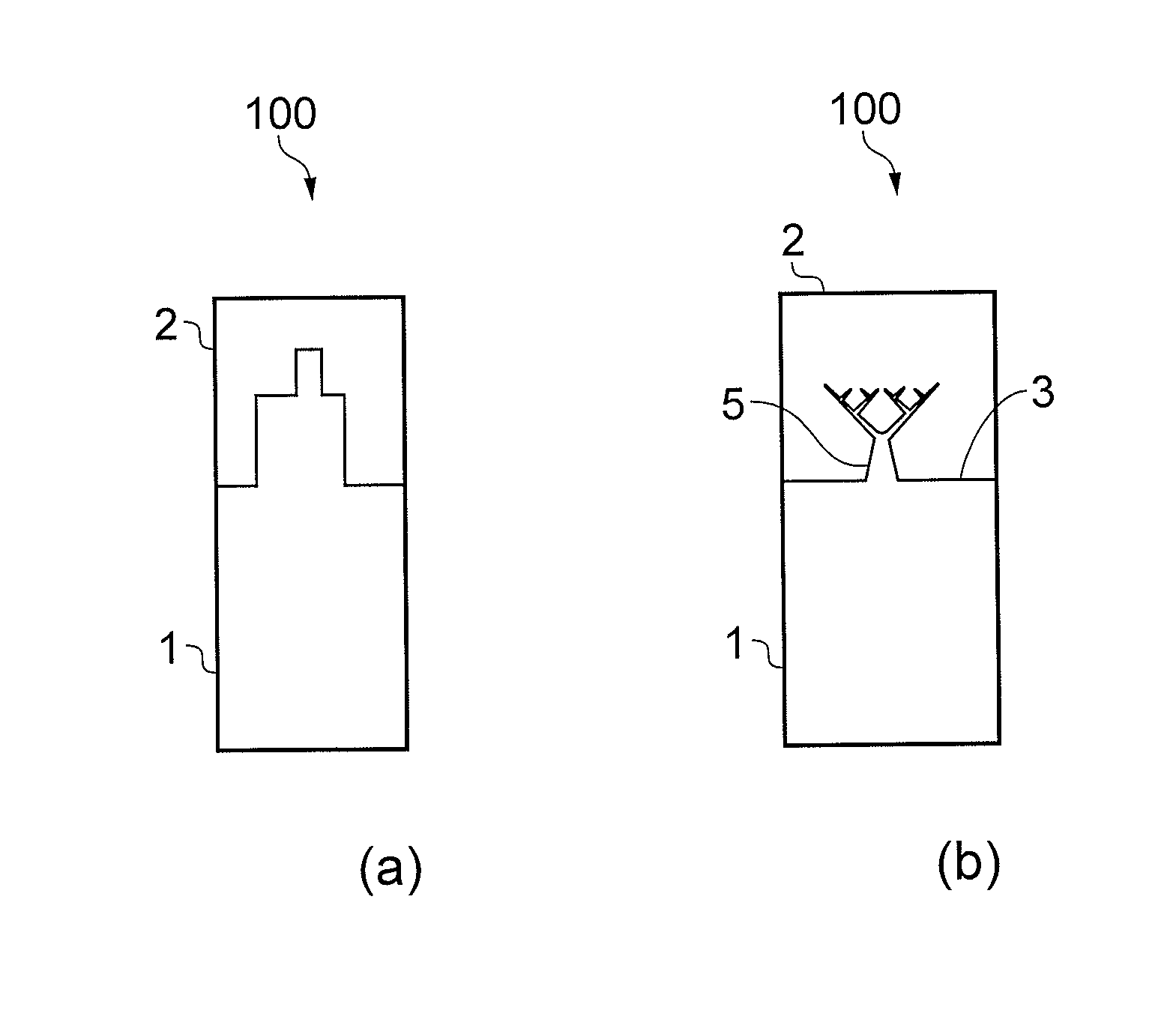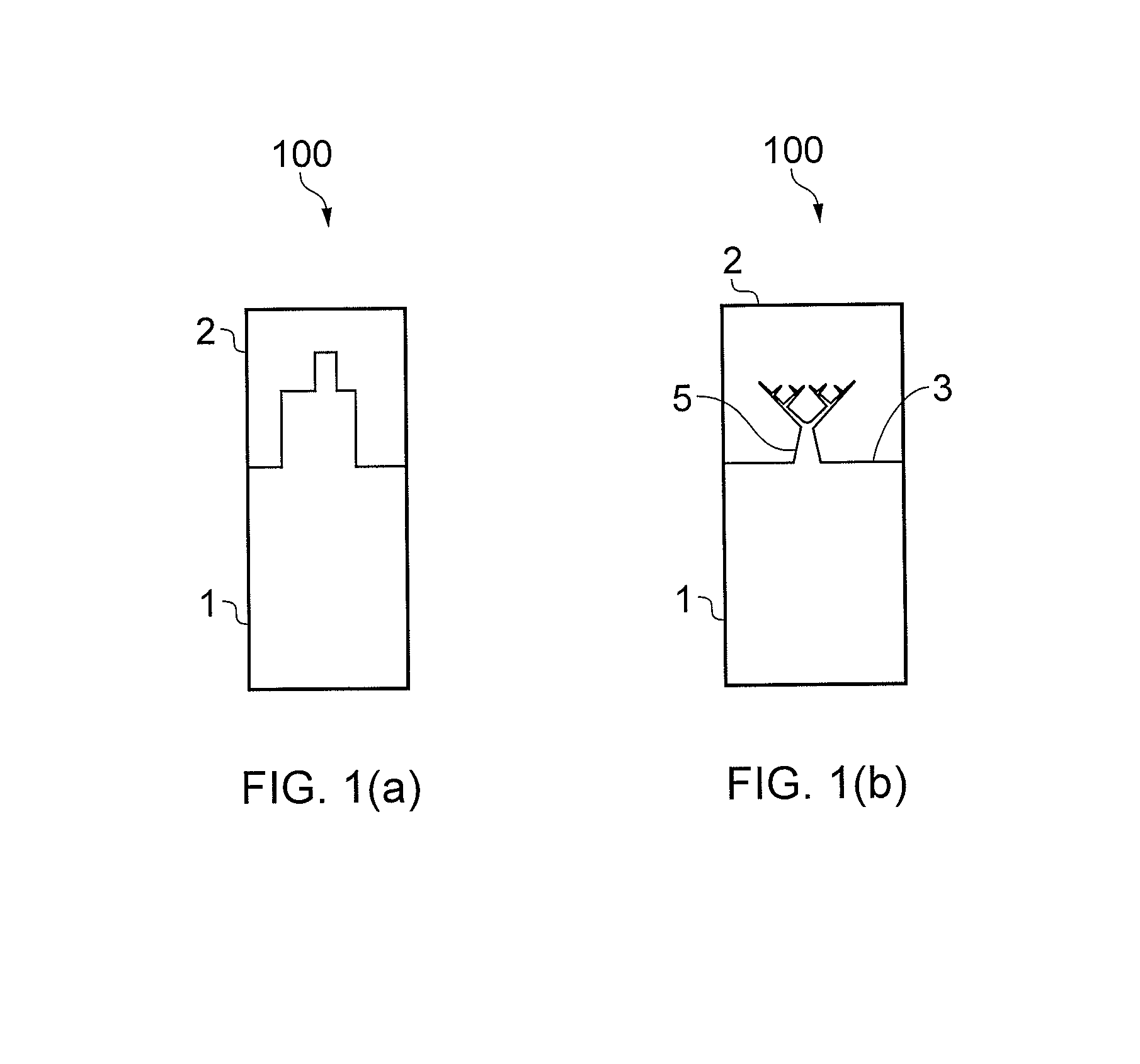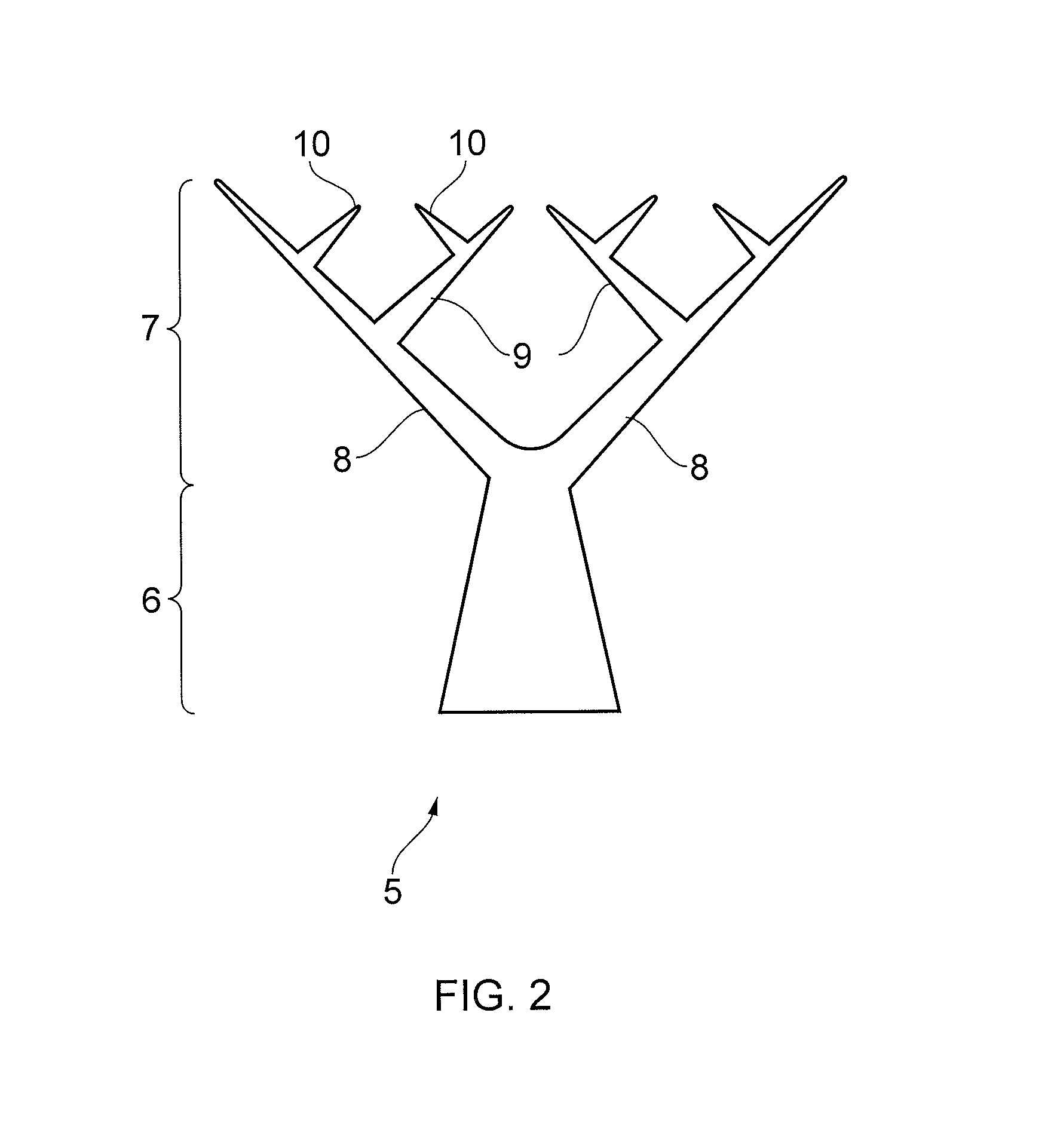Joint structure and method
- Summary
- Abstract
- Description
- Claims
- Application Information
AI Technical Summary
Benefits of technology
Problems solved by technology
Method used
Image
Examples
Embodiment Construction
[0055]The invention derives from the realisation that is possible to form structures or fasteners on an outer surface of a substrate which can be embedded in a liquid phase material so as to improve the load-bearing capacity or other operational parameters of the combined structure once the liquid phase material has solidified. One particular implementation of the invention is a joint 100 between a substrate 1 and a composite body 2. A portion of such a joint 100 is shown in FIG. 1(b). The substrate and composite body are herein referred to as respective metal 1 and composite 2 elements of the joint.
[0056]An upper surface 3 of the metal element 1 is provided with fastening means for fastening the metal element 1 to the composite 2. The fastening means is a plurality of fastening projections 5. The fastening projections 5 are tree-like or tree-root-like, e.g. biomimetic, in form and are upstanding from the upper surface 3 of the metal element 1. The fastening projections 5 are shown ...
PUM
| Property | Measurement | Unit |
|---|---|---|
| Volume | aaaaa | aaaaa |
| Shape | aaaaa | aaaaa |
| Deformation enthalpy | aaaaa | aaaaa |
Abstract
Description
Claims
Application Information
 Login to View More
Login to View More - R&D
- Intellectual Property
- Life Sciences
- Materials
- Tech Scout
- Unparalleled Data Quality
- Higher Quality Content
- 60% Fewer Hallucinations
Browse by: Latest US Patents, China's latest patents, Technical Efficacy Thesaurus, Application Domain, Technology Topic, Popular Technical Reports.
© 2025 PatSnap. All rights reserved.Legal|Privacy policy|Modern Slavery Act Transparency Statement|Sitemap|About US| Contact US: help@patsnap.com



